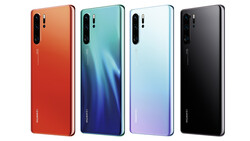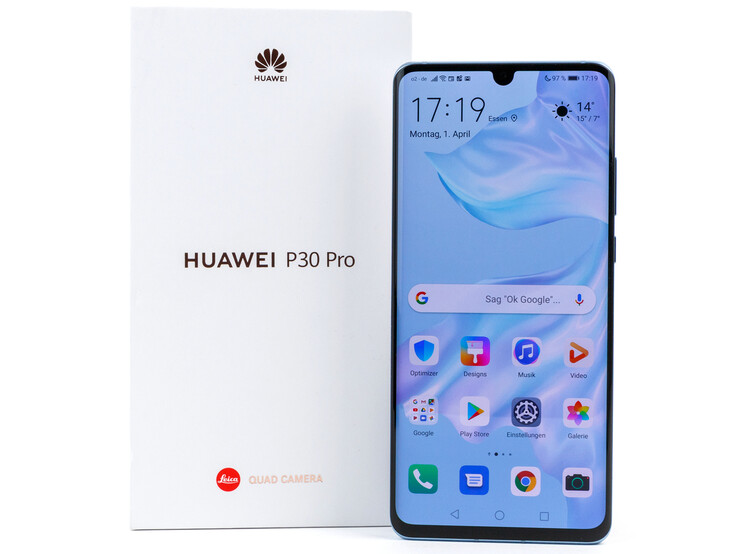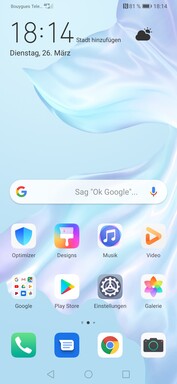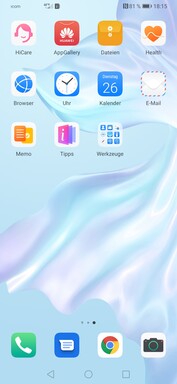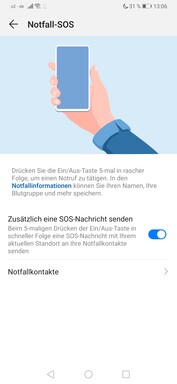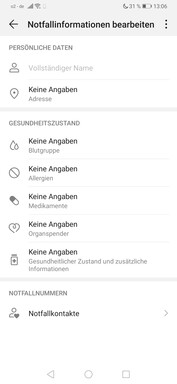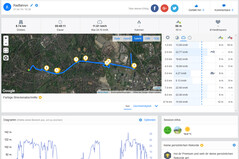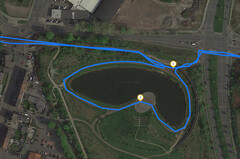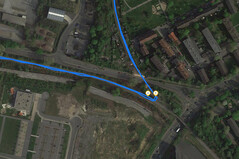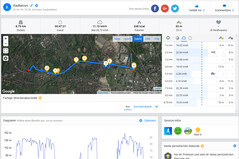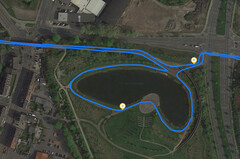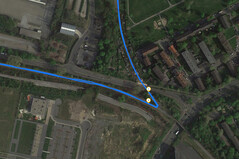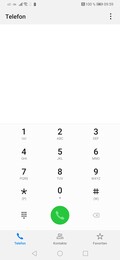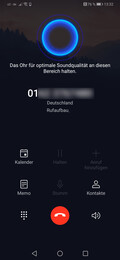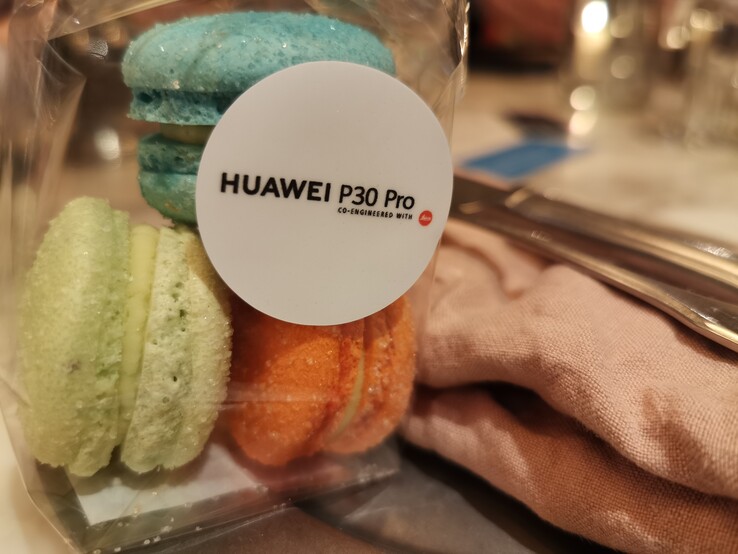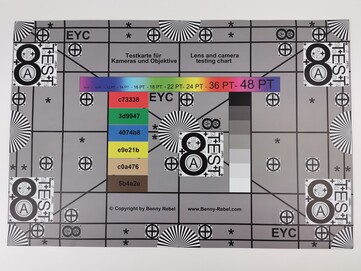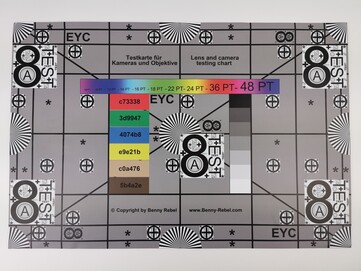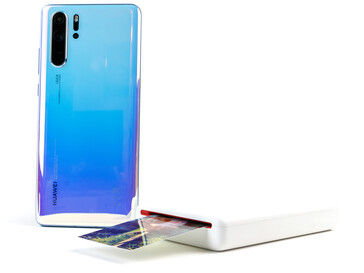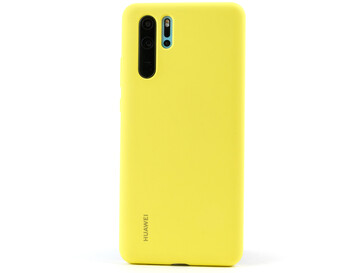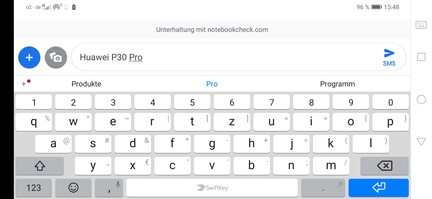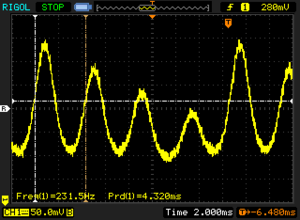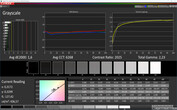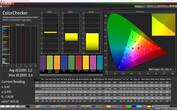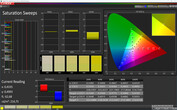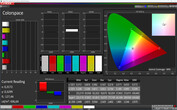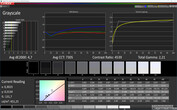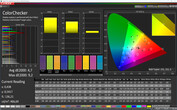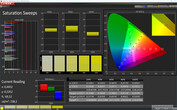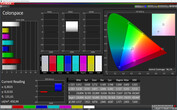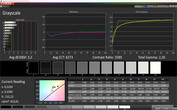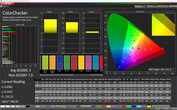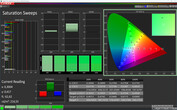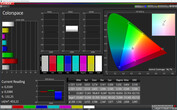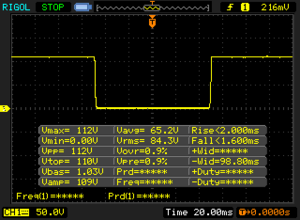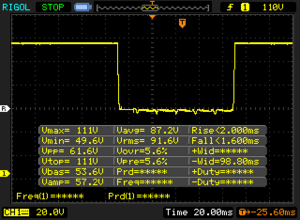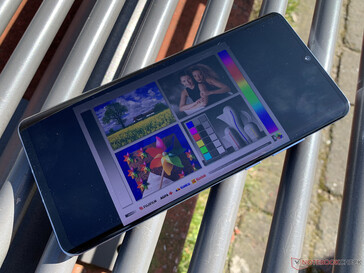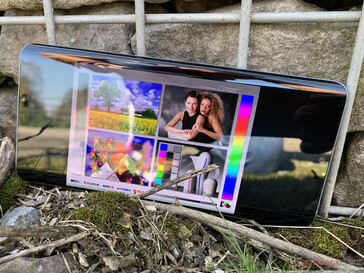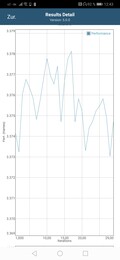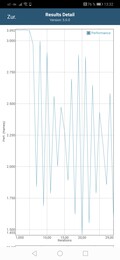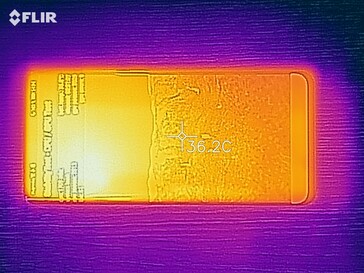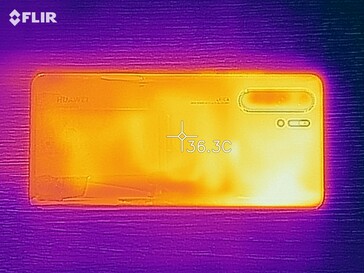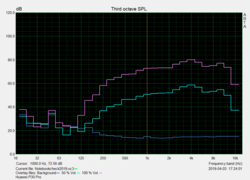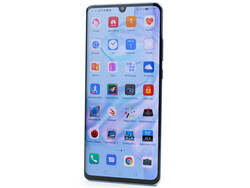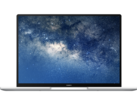Huawei P30 Pro Smartphone Review
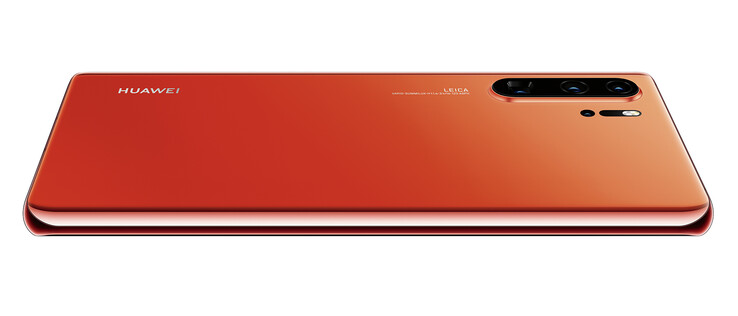
The Huawei P30 Pro has grown in all aspects compared to its predecessor, the P20 Pro. Strikingly, the P30 Pro has a 6.47-inch OLED display, which is even slightly larger than the size of the screen in the Mate 20 Pro. Huawei equips the P30 Pro with the same HiSilicon Kirin 980 SoC that we have seen in the Mate 20 Pro and Honor View 20, which the Chinese company pairs with 6 GB or 8 GB of RAM and a choice between 128, 256 and 512 GB of internal storage. The P30 Pro also supports Huawei’s nano memory card format instead of microSD. The former is smaller yet currently more expensive than the latter per GB, although expandable storage is better than no expandable storage. The P30 Pro supports wireless charging too and is IP68 against water and dust. Additionally, Huawei has moved the fingerprint sensor under the display as it did with the Mate 20 Pro.
The heart of the P series is still the camera, which has also been developed in cooperation with Leica for the P30 Pro. Huawei has dispensed with the monochrome sensor of the P20 Pro but has added an ultra-wide-angle lens in its place, just as the company did with the Mate 20 Pro. However, the P30 Pro has one more rear-facing camera of sorts than its Mate 20 series cousin. Huawei has equipped the P30 Pro with a time-of-flight sensor (ToF), which Huawei claims to have been specially developed to calculate spatial depths. The telephoto lens now offers not 3x optical zoom like the one in the P20 Pro did, but 5x zoom for even clearer zoomed photos. Likewise, Huawei has improved the hybrid zoom too, which now extends to 10x magnification, while the digital zoom can reach up to 50x magnification too. Finally, the P30 Pro has a massive 32 MP front-facing sensor, compared to the 24 MP ones in the Mate 20 Pro and P20 Pro.
The P30 Pro is a powerful smartphone on paper, which reflects in its pricing. The device starts at €999 (~$1,120) for the 128 GB model, which is €100 (~$112) more expensive than the P20 Pro and rises to €1,099 (~$1,233) if you want 256 GB of storage. Prices then spike to €1,249 (~$1,401) for the 512 GB model, which is a hefty price tag even by Apple standards.
We have chosen to compare the P30 Pro against other modern and large flagships. Our comparison devices will include the Apple iPhone XS Max, Google Pixel 3 XL, Samsung Galaxy S10+, Sony Xperia XZ2 Premium, and the Xiaomi Mi 9.
- 03.29.2019: First impressions, photos and display measurements added.
- 04.02.2019: Connectivity and GPS sections added. Camera tests expanded and initial battery life tests added.
- 04.04.2019: Display and Performance sections completed
- 04.05.2019: Update: Communication, Telephony, Gaming, Emissions, Power Consumption and Battery Life sections added.
- 04.08.2019: Review completed.
Case
As you can see from the photo to the right, the P30 Pro comes in a range of colours that will make it stand out from the crowd. The device currently comes in black and white, which Huawei markets as Pearl White, along with Aurora, Amber Sunrise and Breathing Crystal. Please keep in mind that the white version is not available in all countries, such as Germany.
Do not let the P30 Pro’s huge display fool you either, because it is a comparatively compact device thanks to its high screen-to-body ratio. Huawei has achieved this by only placing the front-facing camera above the screen, which sits in a small waterdrop notch. Moreover, the P30 Pro has a Huawei Acoustic Display, which emits sound via the display and forgoes the need for a traditional speaker.
The P30 Pro is slightly taller and thicker than its predecessor, although it is a touch narrower than the P20 Pro. We would be surprised if you could tell the difference though as it is just over 0.5 mm (~0.02 in). Likewise, while the rear-facing camera housing is bigger than the one on the P20 Pro, it protrudes around 0.35 mm (~0.01 in) less from the back glass than its predecessor’s did.
The device has a glass front and back that sandwiches a metal frame as with most modern flagships. Both glass panels taper into the frame like the Samsung Galaxy S series do, which makes the P30 Pro look slimmer than it actually is. However, the smooth finish is a true fingerprint magnet despite its grease-resistant coating. Our review unit is impeccably well made though and feels sturdy. Moreover, all transitions between materials are clean and evenly processed with narrow gaps.
The card slot is located on the underside of the frame and does not quite match the colour of our Breathing Crystal review unit. The outside of the slot is metal though, while the double-sided card holder itself is made of plastic. The P30 Pro supports either two nano-SIM cards or a nano memory card instead of a second SIM.
The P30 Pro also has a 4,200 mAh battery that Huawei hides beneath the back glass, which prevents it from being user swappable. However, the inability to replace the battery helps the device achieve its IP68 certification against dust and water.
Connectivity
The P30 Pro supports up to 256 GB NM cards just like its sibling, the Mate 20 Pro. NM cards are considerably smaller than their microSD counterparts, and while they are more widely available than when we tested the Mate 20 Pro, they are still around twice as expensive per GB as microSD cards. Moreover, Huawei does not currently support saving apps or data to NM cards, just media such as music, photos or videos. In short, NM cards do not currently offer any advantages to the end user.
Huawei has equipped the P30 Pro with a USB 3.1 Gen. 1 Type-C port, but included a USB 2.0 cable with our review unit for some reason. The port supports HDMI and DisplayPort out via optional adapters and allows you to make use of Huawei’s desktop mode. The P30 Pro also supports Huawei OneHop, which functions like a supercharged Bluetooth file transfer. OneHop combined Bluetooth, NFC and Wi-Fi Direct, although Huawei currently only makes this functionality available to Huawei laptops such as the MateBook X Pro.
The P30 Pro shares much of its connectivity with other modern flagships and the Mate 20 Pro. The device supports Bluetooth 5.0 with aptX HD and LHDC, NFC, MIMO Wi-Fi, LTE Cat. 21 and an infrared transmitter for controlling electrical appliances such as TVs. Moreover, the P30 can charge wirelessly at 15 W using the Qi open standard and can wirelessly charge other devices such as the Mate 20 Pro can. You can charge the device at 40 W using the included charger too. There is also an in-screen fingerprint sensor, which Huawei promises is 30% faster than the one in the Mate 20 Pro. Unfortunately, the P30 Pro lacks a notification LED, which we often find useful. Huawei has included an always-on display (AoD) though that provides much of the same functionality as a notification LED would.
Software
Huawei ships the P30 Pro with Android 9.0 Pie at the time of writing, atop of which the company adds its EMUI 9.1 interface. According to experience, the P30 Pro should receive Android Q and R along with regular security updates too.
Huawei has made a few minor adjustments with EMUI 9.1 compared to EMUI 9.0 including GPU Turbo 3.0 and changing the look of a few icons. The camera app has undergone the greatest changes in our opinion, which we shall cover in greater depth in the Cameras section of this review. Additionally, Huawei has done away with the Beam functionality and has made many small tweaks to the menus. The company has added an SOS function, which will send an SMS to your emergency contacts with your location. You can also set it to send important health information too. This SOS function worked well in our tests and is triggered by pressing the power button five times.
Huawei also removes the user account control that Google bakes into stock Android. The Chinese company does include extensive security options though and allows you to back up HiSuite to a computer, an external memory card, a USB stick, or a local NAS.
Our review unit has only a few preinstalled third-party apps, which can all be uninstalled. Huawei also continues to include its own app store, which it calls AppGallery. We should also point out that our review unit had the 1st of March 2019 security updates installed at the time of our tests, which were up to date.
Communication & GPS
The P30 Pro supports LTE Cat. 21, which allows it to theoretically achieve up to 1.4 GBit/s download speeds. Moreover, the device supports numerous LTE bands, so you should have no issue with connecting to LTE networks overseas. The P30 Pro supports all major 2G and 3G frequencies too, while our review unit maintained decent mobile network reception throughout our tests.
Huawei equips the P30 Pro with a Wi-Fi 5 compliant modem that supports up to IEEE 802.11 ac Wi-Fi and can connect to either 2.4 GHz or 5 GHz networks. The device also has MIMO antennas that should provide a decent signal range, while its VHT160 coverage theoretically allows it to achieve up to 1.7 GBit/s Wi-Fi speeds. Our Linksys EA8500 reference router cannot reach those speeds, but the P30 Pro places highly in our iperf3 Client comparison tables. Transmission speeds fluctuated more during the upload test than they did during the download test, but you should not notice any issues in daily use. Overall, the P30 Pro averages better Wi-Fi transmission speeds than all our comparison devices with the XZ2 Premium a close second.
The P30 Pro could reach even higher speeds too if it were connected to a faster router. Moreover, our review unit has decent Wi-Fi range, and we experienced no dropouts during our tests.
The P30 Pro supports BeiDou, Galileo, GLONASS, GNSS and GPS for location services. We could not test whether the device supports SBAS though. It is worth noting that the P30 Pro supports dual GPS when being used in North America or Europe.
Our review unit finds a satellite fix quickly even when being used in buildings, which is impressive. The device can find a fix with up to 4 metres (~13 ft) accuracy regardless of where it is being used, although we noticed that its accuracy fluctuated more indoors than it did outdoors.
We also subjected the P30 Pro to a short bike ride to test its location accuracy against our trusty Garmin Edge 500 bike computer. The two devices plotted us having travelled almost the same distance, with the P30 Pro claiming we cycled 50 metres (~164 ft) further than the Garmin did. The two devices recorded roughly the same altitude information too, although our review unit tracked us more accurately overall, in our opinion. In short, the P30 Pro is ideal for all general navigation tasks and even as an alternative to a bike computer.
Telephone Features & Call Quality
The pre-installed phone app has not changed much with the move to EMUI 9.1. Huawei separates the app across three tabs for call history, contacts and favourites. The big change in terms of telephony is the earpiece, which now sits beneath the display rather than just above it like on most smartphones. Huawei markets this as Acoustic Display, which uses magnetic levitation technology to transmit sound through the display glass.
The idea is good, but its execution is lacking. While our call partner remained intelligible throughout our tests, their voice sounded unnatural and tinny. We could not feel the display vibrating against our voice though, which is a plus.
Speakerphone works better in our opinion, but our voice sounds overly echoey according to the person on the other end of our test calls. The included headphones deliver decent call quality too, although the microphone cannot filter out wind noise well.
Huawei does not integrate a SIP client within the default phone app, so you must download one if you need that functionality. Wi-Fi calling and VoLTE are on board though and will work if your carrier has provisioned the P30 Pro on their network.
Cameras
The P30 Pro has a whopping 32 MP front-facing camera. Unfortunately, the device cannot use pixel binning to improve image fidelity as other high-resolution sensors such as the Sony IMX586 can. The 32 MP sensor has an f/2.0 aperture which suggests that it should take good pictures in low light, although we currently have no other information to go on as Huawei has been scant on the details. Our initial test shots look good even in dim light, but there is some minor image noise, which we did not expect to see. Likewise, fine details seem rather blurry, which is underwhelming.
The portrait mode is impressively sophisticated though and includes numerous modes such as a beauty filter that can be used to adjust your complexion should you wish to do so. Unfortunately, the sensor is only fixed focus and can record videos in 1080p at best.
Additionally, the P30 Pro has a Leica branded quad rear-facing camera array. The star here is the 40 MP main camera, which has an f/1.6 aperture, 1.55 μm pixels, an RYYG filter and is optically stabilised (OIS). There is also a 20 MP ultra-wide-angle sensor with an f/2.2 aperture and an 8 MP telephoto lens that has an f/3.4 aperture along with OIS. Huawei has included a ToF sensor as we mentioned earlier in this review, which cannot be used on its own.
The main camera also offers a 5x optical zoom, 10x hybrid zoom a 50x stepless digital zoom. In short, the P30 Pro has an incredible range of focal lengths and currently has the most flexible set of cameras in any smartphone that we have tested.
From left to right: ultra-wide-angle, standard, 5x tele, 10x hybrid, 30x hybrid and 50x hybrid
We also compared the zoom capabilities of a few smartphones with those of the P30 Pro. We used 10x digital zoom as a benchmark, but the P30 Pro blows the competition away as demonstrated by the photos below. The Galaxy S10+ proved the best of the rest and did a better job at capturing more details than even the P20 Pro. Our weakest comparison devices in our opinion were the Honor and iPhone XS, which took grainy photos that have poor dynamics. Only the P30 Pro took a clear photo even if a few details are lost through its image algorithms. In short, the P30 Pro provides almost lossless 10x digital zoom, which is incredible for a smartphone.
From left to right: Huawei P20 Pro, Honor View 20, Samsung Galaxy S10+, Apple iPhone XS and Huawei P30 Pro
Often, there is no need to zoom that far, and typically 2x zoom looked best to our eyes. However, we still liked the results that our comparison devices achieved in daylight despite all the impressive camera technology that the P30 Pro has. Our test photos have a noticeable red tint to them, which makes the sky in the photo below look dull compared to those shot with our comparison devices. Moreover, the edges of objects are not that clean, while there is even some image noise.
The P30 Pro performs better in low-light, as demonstrated by the photo below, which we shot at 1 lux. There is still some slight image noise, although it is visibly milder than on our comparison devices. The overly red tint is still present though.
The main sensor preserves details well, and while the V40 ThinQ manages to expose the scene better than the P30 Pro, it comes at the expense of image quality. The photo taken by the Galaxy S10+ looks good too, but its colour reproduction is rather too cool for our liking, and it does a poorer job at eliminating image noise. The less said about the iPhone XS Max, the better though, because its attempt is lacking in all areas. The photo looks a mess and has poor dynamics along with a distracting amount of image noise compared to what the P30 Pro achieves.
2X zoom comparison. From left to right: Huawei P30 Pro, Samsung Galaxy S10+, Apple iPhone XS and LG V40 ThinQ
Huawei has also taken a huge step forwards with low-light performance. The main camera in the P30 Pro has the same sensor size as that of its predecessor, but its aperture has increased from f/1.8 to f/1.6, which allows it to let more light in. Its Red, Yellow, Yellow, Green (RYYG) Bayer filter should provide up to 40% better photosensitivity than the P20 Pro offers.
We also did a direct comparison of the main sensors of the P20 Pro, P30 Pro and View 20 with a lux ambient light to see what difference this new camera technology makes. The P20 Pro has a 40 MP main sensor (1/1.7 ", 1.55 μm, f/1.8, RGGB filter) as does the P30 Pro (1/1.7", 1.55 μm, f/1.6, RYYB filter), while the View 20 has a 48 MP sensor (1/2", 0.8 μm, f/1.8), for reference. We conducted our test with all AI features switched off. Incidentally, the View 20 has the same Sony IMX586 sensor as found in the Xiaomi Mi 9. As the photos below demonstrate, the P30 Pro has a significantly better main sensor than the Sony IMX586 that captures noticeably more details in low-light. The P30 Pro also does a better job than its predecessor and takes a much richer looking photo overall.
Low light comparison. Shot at maximum resolution without AI. From left to right: Honor View 20, Huawei P20 Pro and Huawei P30 Pro
Overall, the P30 Pro cuts a compelling figure in our photo comparisons. The AI support is useful, but we tended to leave it off because it oversaturated the colours. That is more a matter of taste though. The main sensor captures detailed images even at 10 MP thanks to its use of pixel binning. However, our review unit struggles in scenarios such as scene 2 compared to devices such as the Galaxy S10+. The P30 Pro over sharpens objects more than the Galaxy S10+ does and cannot reproduce fine details such as our mascot’s fur as well either. Even the iPhone XS Max produces a more natural looking photo.
With that said, the P30 Pro comes into its own in low-light shots. Our review unit delivers a more balanced looking photo than our comparison devices can while keeping image noise to a minimum. Our main frustration here is how the P30 Pro manages white balance. We hope that Huawei tweaks the camera software and makes the white balance cooler, as it currently gives photos an overly red tint regardless of the lighting. Overall, the P30 Pro has the most technically sophisticated and versatile set of cameras currently available in any commercially available smartphone.
We also subjected our review unit to further camera tests under controlled lighting conditions to test the accuracy of its colour reproduction. Surprisingly, the ultra-wide-angle sensor is the most accurate, with it reproducing colours vividly. By contrast, the other two sensors tend to over-brighten colours, which is not good for all tones. This is particularly evident with bluey green tones and bright orange. The telephoto lens also oversaturates light green as well as with yellow, which looks unrealistic compared to the ColorChecker reference colour.
The main and ultra-wide cameras do a great job at capturing our test chart though. The main sensor captures the chart accurately and in detail even at 10 MP. However, contrast levels and sharpness are lower at the bottom edges of the chart than in the corresponding 40 MP shot. Our review unit does particularly well at capturing colour gradients and black text against dark backgrounds in both 10 MP and 40 MP.
The photo taken with the ultra-wide-angle sensor looks much darker with stronger contrast by comparison. The photo looks sharp too, albeit the contrast drops off in the lower corners. The sensor also gives the chart a subtle curve. The telephoto lens over brightens colours though. The latter also needs a steady hand. Otherwise, photos will look rather blurrier than they do when using the other sensors.
Video
The P30 Pro can record videos in up to Ultra HD at 30 FPS, although please keep in mind that Huawei currently limits this mode to recording for up to ten minutes. Disappointingly, the P30 Pro can only record at 60 FPS in a maximum of Full HD. Moreover, the camera app defaults to 720p when 60 FPS is enabled.
Worse still, its full suite of video effects is available only in 720p. Switching to Full HD disables any beauty effects, while Huawei disables every video effect in UHD and Full HD at 60 FPS. The device can currently only shoot in H.264 or H.265. Huawei claims that it will deliver an update in Mid-May that will greatly expand upon the functionality that the P30 Pro currently offers. Until then, we feel rather misled by Huawei’s claims at the device’s unveiling, where company representatives boasted about the P30 Pro’s video capabilities.
At least the P30 Pro can keep up with the competition at UHD, although again it over reddens videos. The iPhone XS Max takes better-looking videos overall, but the P30 Pro has the edge over the Galaxy S10+ and V40 ThinQ, which over sharpen and overexpose videos respectively.
Again, the P30 Pro flexes its muscles in low-light videos, which we tested at 1 lux. Videos look fantastic when played back on the device, but viewing them in this format hides weaknesses that larger external monitors reveal. There is noticeable image noise when shooting in Full HD at 30 FPS too, while large areas of colour look disappointingly blurry. The P30 Pro can dynamically vary the refresh rate as the iPhone XS Max can though to produce better results. The latter generally shoots darker looking videos than the P30 Pro, although they look the most consistent of our comparison devices.
However, the P30 Pro and its competitors produce useless results when shooting in 60 FPS in low-light. The P30 Pro allows its sensors to capture plenty of light, but videos lack sharpness. The iPhone XS Max performs better here in our opinion and relies more on capturing details than getting exposure levels correct.
Lastly, we also repeated our low-light test in Ultra HD at 30 FPS to see how well the P30 Pro coped. In short, our review unit performed worse than expected, with the resulting video looking muddier than the corresponding one shot in Full HD and anything that our comparison devices produced.
Ultimately, we hope that Huawei will deliver on its promise to improve the P30 Pro’s video capabilities next month. The device certainly has excellent optics, but it is not currently making the best use of them and is not living up to expectations.
We also should point out that the Pro mode delivers excellent results if you can get the settings right. The mode has numerous settings for tweaking the ISO, focus and shutter speed, while you can adjust the white balance to overcome the default tendency to over redden photos and videos.
Video comparison: Daylight Ultra HD. From left to right: Huawei P30 Pro, Samsung Galaxy S10+, Apple iPhone XS and LG V40 ThinQ, Apple iPhone XS und LG V40 ThinQ
Video comparison: Low-Light Full HD. From left to right: Huawei P30 Pro, Samsung Galaxy S10+, Apple iPhone XS and LG V40 ThinQ
Video Comparison: Low-Light Full HD with HFR. From left to right: Huawei P30 Pro, Samsung Galaxy S10+, Apple iPhone XS and LG V40 ThinQ
Video comparison: Low-Light Ultra HD. From left to right: Huawei P30 Pro, Samsung Galaxy S10+, Apple iPhone XS and LG V40 ThinQ
Accessories & Warranty
The P30 Pro comes with a 40-W charger that Huawei brands SuperCharge, and which operates at 5V/2A, 9V/2A or 10V/4A. Huawei also includes a USB Type-A to Type-C cable a pair of Type-C headphones, a card slot tool and a quick start guide. The Chinese manufacturer includes a transparent protective case in some regions too.
Huawei also sells other cases that range from a simple silicone case that come in multiple colours to ones that add functionality such as additional waterproofing. The company sells a Qi wireless charger too, but the P30 Pro will charge wirelessly from any Qi charger.
Moreover, the P30 Pro also supports reverse wireless charging and can charge devices that support the Qi standard such as Huawei’s FreeBuds. The company also sells a wireless photo printer that prints on zinc paper and which costs €149 (~$168). The device works well and is useful for quick printing, but it cannot reproduce photos as well as a full-size photo printer could.
The P30 Pro comes with 24 months manufacturer’s warranty, which cannot be extended at the time of writing. Huawei also does not offer any device insurance like Apple does.
Please see our Guarantees, Return Policies & Warranties FAQ for country-specific information.
Input Devices & Operation
The P30 Pro has a ten-point multitouch touchscreen. Huawei continues to include support for its knuckle gestures, but it has not expanded upon them since the release of the P20 Pro. Huawei does not specify what glass it uses to cover the P30 Pro’s touchscreen, but it has a smooth finish on which it is easy to perform gestures such as swiping. Our review unit recognised our inputs quickly and precisely across the entire display throughout our tests.
EMUI 9.1 features three navigation options. Huawei enables the conventional three button array by default, but there is also pure gesture-based control or NaviDot, which the company has included since at least EMUI 8.0. We particularly liked the gesture controls, which felt intuitive and offer more screen real estate than the traditional navigation buttons do.
Huawei continues to include SwiftKey as the default keyboard, but you can download another keyboard app, such as those on the Google Play Store, should you dislike SwiftKey. We should point out that our review unit had haptic feedback switched off upon delivery, for some reason. Moreover, vibration did not work in all the apps that it should have done during our tests, although the corresponding motor can deliver strong vibrations when it is activated.
The P30 Pro also features an optical in-screen fingerprint scanner, which is a first for the Huawei P series. It is positioned a little lower than the one in the Mate 20 Pro and should always be easy to reach regardless of how you hold the device. The sensor worked well in our tests and reliably unlocked the device quickly if our fingers were not too greasy or wet.
Alternatively, you could unlock the P30 Pro using its 2D face unlock. However, this not as secure as 3D solutions and cannot be used to sign into banking apps or password managers instead of a password.
Huawei continues to include a one-handed mode too. However, we found this difficult to use regardless of the method we tried because of the size of the P30 Pro’s display. In short, you will need long fingers to use the one-handed mode effectively.
Display
The P30 Pro has a 6.47-inch OLED panel that operates natively at 2,340x1,080. The 1080p resolution may seem rather low by 2019 standards and results in a sub 400 PPI pixel density, which is the Huawei P smartphone for a long time to do so. However, we did not notice this in daily use. The display looks sharp, and we cannot see individual pixels with the naked eye.
Our review unit achieved an average maximum brightness of 608 cd/m² according to X-Rite i1Pro 2 with the ambient light sensor activated, which is respectable by flagship smartphone standards. Likewise, the more realistic APL 50 test claims that the panel reaches 772 cd/m² at the centre of the display. However, maximum brightness drops to just 446 cd/m² with the ambient light sensor deactivated. The P30 Pro achieves absolute blacks and a theoretically infinite contrast ratio thanks to its OLED panel, as all but the Xperia XZ2 Premium of our comparison devices also do.
Our review unit also can get as dim as 1.84 cd/m², which should be easy to read in the dark for most people. Huawei has included an eye-saver mode too, which you can control manually or set to run between certain times, should you wish to minimise the amount of blue light that the screen emits. However, it is a pity that Huawei has not equipped the P30 Pro with a Natural Tone Display, which can adjust the screen’s white balance in changing lighting conditions using the ambient light sensor.
Huawei disables the P30 Pro’s always-on display (AoD) default, but at least now it can finally show third-party notifications. The display, because it is an OLED panel, uses pulse-width modulation (PWM) to regulate brightness, which could cause eye strain or headaches for some people. We shall provide PWM data for our review unit subsequently, but it has a flat amplitude curve, so only those who are particularly PWM sensitive should notice any screen flickering.
It also appears that Huawei has equipped the P30 Pro with a BEO panel as the sub-pixel array confirms. The one in our review unit is identical to the panel in our Mate 20 Pro test device, which also had a BEO panel. LG and Samsung panels have different sub-pixel structures, so it is unlikely to be from either of those manufacturers.
| |||||||||||||||||||||||||
Brightness Distribution: 89 %
Center on Battery: 597 cd/m²
Contrast: ∞:1 (Black: 0 cd/m²)
ΔE ColorChecker Calman: 2.2 | ∀{0.5-29.43 Ø4.78}
ΔE Greyscale Calman: 1.6 | ∀{0.09-98 Ø5}
99% sRGB (Calman 2D)
Gamma: 2.23
CCT: 6268 K
| Huawei P30 Pro OLED, 2340x1080, 6.5" | Huawei P20 Pro OLED, 2240x1080, 6.1" | Samsung Galaxy S10 Plus OLED, 3040x1440, 6.4" | Apple iPhone Xs Max OLED, 2688x1242, 6.5" | Xiaomi Mi 9 AMOLED, 2340x1080, 6.4" | Sony Xperia XZ2 Premium LCD-IPS, 3840x2160, 5.8" | Google Pixel 3 XL AMOLED, 2960x1440, 6.3" | |
|---|---|---|---|---|---|---|---|
| Screen | 13% | -34% | 9% | 19% | -29% | -26% | |
| Brightness middle (cd/m²) | 597 | 569 -5% | 710 19% | 656 10% | 593 -1% | 477 -20% | 410 -31% |
| Brightness (cd/m²) | 608 | 578 -5% | 721 19% | 659 8% | 587 -3% | 453 -25% | 413 -32% |
| Brightness Distribution (%) | 89 | 95 7% | 97 9% | 88 -1% | 94 6% | 86 -3% | 97 9% |
| Black Level * (cd/m²) | 0.33 | ||||||
| Colorchecker dE 2000 * | 2.2 | 1.3 41% | 3.7 -68% | 1.7 23% | 0.9 59% | 2.1 5% | 3.16 -44% |
| Colorchecker dE 2000 max. * | 3.6 | 2.1 42% | 10.3 -186% | 2.8 22% | 2 44% | 8.2 -128% | 5.5 -53% |
| Greyscale dE 2000 * | 1.6 | 1.6 -0% | 1.5 6% | 1.7 -6% | 1.5 6% | 1.6 -0% | 1.7 -6% |
| Gamma | 2.23 99% | 2.31 95% | 2.1 105% | 1.998 110% | 2.27 97% | 2.28 96% | 2.219 99% |
| CCT | 6268 104% | 6401 102% | 6611 98% | 6487 100% | 6548 99% | 6425 101% | 6653 98% |
| Contrast (:1) | 1445 |
* ... smaller is better
Screen Flickering / PWM (Pulse-Width Modulation)
| Screen flickering / PWM detected | 231.5 Hz | ≤ 99 % brightness setting | |
The display backlight flickers at 231.5 Hz (worst case, e.g., utilizing PWM) Flickering detected at a brightness setting of 99 % and below. There should be no flickering or PWM above this brightness setting. The frequency of 231.5 Hz is relatively low, so sensitive users will likely notice flickering and experience eyestrain at the stated brightness setting and below. In comparison: 53 % of all tested devices do not use PWM to dim the display. If PWM was detected, an average of 8101 (minimum: 5 - maximum: 343500) Hz was measured. | |||
We also subjected our review unit to further display tests with a photo spectrometer and CalMAN analysis software. Huawei includes several colour and white balance options, the default combination of which is Vivid and standard respectively. The former utilises the DCI P3 colour space, which is wider than sRGB for reference. However, the standard white balance mode gives our review unit’s display too much of a blue tint, but changing the white balance to “Warm” rectifies this.
During our tests we found the most accurate colour mode and white balance combination to be normal and standard, although even this optimal setting does not reach the level of its predecessor. We struggled to notice this in daily use though, as the deviations are largely invisible to the naked eye.
We hope that Huawei introduces an AdobeRGB mode for the P40 Pro too. This colour space offers a larger green coverage than DCI P3 and sRGB and allows for greater colour accuracy.
Display Response Times
| ↔ Response Time Black to White | ||
|---|---|---|
| 3.6 ms ... rise ↗ and fall ↘ combined | ↗ 2 ms rise | |
| ↘ 1.6 ms fall | ||
| The screen shows very fast response rates in our tests and should be very well suited for fast-paced gaming. In comparison, all tested devices range from 0.1 (minimum) to 240 (maximum) ms. » 14 % of all devices are better. This means that the measured response time is better than the average of all tested devices (20.2 ms). | ||
| ↔ Response Time 50% Grey to 80% Grey | ||
| 3.6 ms ... rise ↗ and fall ↘ combined | ↗ 2 ms rise | |
| ↘ 1.6 ms fall | ||
| The screen shows very fast response rates in our tests and should be very well suited for fast-paced gaming. In comparison, all tested devices range from 0.165 (minimum) to 636 (maximum) ms. » 13 % of all devices are better. This means that the measured response time is better than the average of all tested devices (31.6 ms). | ||
The P30 Pro is easy to use outdoors thanks to its bright OLED panel. We had no issues with using our review unit even under bright spring sunshine, although the glass has a glossier finish than we would have liked, which is highly reflective.
Performance
Huawei has equipped the P30 Pro with its HiSilicon Kirin 980 SoC, which we have also tested in the Mate 20 Pro and Honor View 20. Huawei manufacturers the Kirin 980 on a 7 nm FinFET process and uses a mixture of Cortex A76 and A55 cores. The SoC has two Cortex A76 performance cores that can clock up to 2.6 GHz and two others that can reach 1.92 GHz. Moreover, there are four power-saving Cortex A55 cores that can clock up to 1.8 GHz. The Kirin 980 also integrates an ARM Mali-G76 MP10 GPU and is complemented with either 6 GB or 8 GB of LPDDR4x RAM. Incidentally, EMUI 9.1 also premieres GPU Turbo 3.0.
Our review unit performed at expected levels in synthetic benchmarks for a Kirin 980 powered device. The SoC still holds its own against newer chips such as the Exynos 9820 and Snapdragon 855, although it has a weaker GPU than its competitors. Incidentally, the Kirin 980 has the same GPU as the Exynos 9820 but with two fewer cores activated. It is worth noting that the P30 Pro consistently performed worse than the Mate 20 Pro in benchmarks for some reason, but you should not notice the difference in daily use.
Moreover, the P30 Pro has excellent system performance and always delivered a smooth experience during our tests. We noticed some minor stutters occasionally during heavy multitasking, but this is only a minor criticism.
| Basemark GPU 1.1 | |
| 1920x1080 Vulkan Medium Offscreen (sort by value) | |
| Huawei P30 Pro | |
| Samsung Galaxy S10 Plus | |
| Xiaomi Mi 9 | |
| Huawei P20 Pro | |
| Average HiSilicon Kirin 980 (25.6 - 30.7, n=2) | |
| Vulkan Medium Native (sort by value) | |
| Huawei P30 Pro | |
| Samsung Galaxy S10 Plus | |
| Xiaomi Mi 9 | |
| Huawei P20 Pro | |
| Average HiSilicon Kirin 980 (16.9 - 28.5, n=2) | |
| 1920x1080 OpenGL Medium Offscreen (sort by value) | |
| Huawei P30 Pro | |
| Samsung Galaxy S10 Plus | |
| Xiaomi Mi 9 | |
| Huawei P20 Pro | |
| Average HiSilicon Kirin 980 (27 - 29.1, n=2) | |
| AnTuTu v6 - Total Score (sort by value) | |
| Huawei P30 Pro | |
| Samsung Galaxy S10 Plus | |
| Xiaomi Mi 9 | |
| Sony Xperia XZ2 Premium | |
| Google Pixel 3 XL | |
| Huawei P20 Pro | |
| Average HiSilicon Kirin 980 (245662 - 254229, n=9) | |
| VRMark - Amber Room (sort by value) | |
| Huawei P30 Pro | |
| Samsung Galaxy S10 Plus | |
| Xiaomi Mi 9 | |
| Huawei P20 Pro | |
| Average HiSilicon Kirin 980 (5020 - 5025, n=2) | |
| Basemark ES 3.1 / Metal - offscreen Overall Score (sort by value) | |
| Huawei P30 Pro | |
| Samsung Galaxy S10 Plus | |
| Apple iPhone Xs Max | |
| Xiaomi Mi 9 | |
| Huawei P20 Pro | |
| Average HiSilicon Kirin 980 (1571 - 1627, n=2) | |
| Average of class Smartphone (205 - 7731, n=35, last 2 years) | |
The P30 Pro also excelled in browser benchmarks, but it could not touch the iPhone XS Max, which is the case with all Android smartphones that we have recently tested. Our review unit performed strongly in WebXPRT and Speedometer though.
Likewise, even complex websites loaded quickly during our tests, as did media content. In short, you should experience no lags or stutters when browsing the web or using Chrome-based apps.
| WebXPRT 3 - Overall | |
| Average of class Smartphone (38 - 380, n=31, last 2 years) | |
| Apple iPhone Xs Max (Safari 12) | |
| Huawei P30 Pro (Chrome 73) | |
| Samsung Galaxy S10 Plus (Samsung Browser 9.0) | |
| Xiaomi Mi 9 (Chrome 73.0.3683.75) | |
| Average HiSilicon Kirin 980 (86 - 124, n=10) | |
| Google Pixel 3 XL (Chrome 70) | |
| Sony Xperia XZ2 Premium (Chrome 68) | |
| Huawei P20 Pro (Chrome 65) | |
| Octane V2 - Total Score | |
| Average of class Smartphone (2228 - 121337, n=197, last 2 years) | |
| Apple iPhone Xs Max (Safari 12) | |
| Xiaomi Mi 9 (Chrome 73.0.3683.75) | |
| Huawei P30 Pro (Chrome 73) | |
| Average HiSilicon Kirin 980 (20618 - 23285, n=10) | |
| Samsung Galaxy S10 Plus (Samsung Browser 9.0) | |
| Google Pixel 3 XL (Chrome 70) | |
| Sony Xperia XZ2 Premium (Chrome 68) | |
| Huawei P20 Pro (Chrome 65) | |
| Mozilla Kraken 1.1 - Total | |
| Huawei P20 Pro (Chrome 65) | |
| Sony Xperia XZ2 Premium (Chrome 68) | |
| Google Pixel 3 XL (Chrome 70) | |
| Average HiSilicon Kirin 980 (1948 - 3098, n=10) | |
| Huawei P30 Pro (Chrome 73) | |
| Xiaomi Mi 9 (Chrome 73.0.3683.75) | |
| Samsung Galaxy S10 Plus (Samsung Browser 9.0) | |
| Average of class Smartphone (257 - 28190, n=154, last 2 years) | |
| Apple iPhone Xs Max (Safari 12) | |
| Jetstream 2 - 2.0 Total Score | |
| Average of class Smartphone (23.8 - 387, n=149, last 2 years) | |
| Huawei P30 Pro (Chrome 73) | |
| Xiaomi Mi 9 (Chrome 73) | |
| Average HiSilicon Kirin 980 (48.4 - 60.9, n=6) | |
| Samsung Galaxy S10 Plus (Samung Browser 9.0) | |
| Huawei P20 Pro (Chrome 74) | |
| Speedometer 2.0 - Result 2.0 | |
| Average of class Smartphone (15.2 - 643, n=122, last 2 years) | |
| Huawei P30 Pro (Chrome 73) | |
| Xiaomi Mi 9 (Chrome 73.0.3683.75) | |
| Average HiSilicon Kirin 980 (58.3 - 67.8, n=6) | |
| Samsung Galaxy S10 Plus (Samsung Browser 9.0) | |
| Huawei P20 Pro (Chrome 74) | |
* ... smaller is better
Huawei sells the P30 Pro with 128, 256 or 512 GB of UFS 2.1 storage, although the latter is not currently available in all regions. Our review unit is the 256 GB model, for reference. The internal storage achieved excellent read and write speeds in AndroBench, with our review unit only finishing below the Xiaomi Mi 9 of our comparison devices.
As mentioned earlier, Huawei has equipped the P30 Pro with an NM card reader. While this is an improvement on its predecessor, which did not support expandable storage, NM cards are currently more expensive than their microSD counterparts without offering any benefits to the end user. Our table below demonstrates this, with our review unit just edging out the Galaxy S10+ and its microSD card reader in AndroBench. We doubt that most people would care, or notice, the 11.5% difference in transfer speeds between the P30 Pro and Galaxy S10+. Moreover, our review unit finished on par with the average of devices that we have tested with 256 GB of UFS 2.1 flash storage. In short, NM cards currently feel gimmicky and a way for Huawei to push a proprietary format for the sake of it.
| Huawei P30 Pro | Huawei P20 Pro | Samsung Galaxy S10 Plus | Xiaomi Mi 9 | Sony Xperia XZ2 Premium | Google Pixel 3 XL | Average 256 GB UFS 2.1 Flash | Average of class Smartphone | |
|---|---|---|---|---|---|---|---|---|
| AndroBench 3-5 | -10% | -23% | 6% | -45% | -21% | -0% | 246% | |
| Sequential Read 256KB (MB/s) | 849 | 832 -2% | 811 -4% | 666 -22% | 749 -12% | 633 -25% | 829 ? -2% | 2228 ? 162% |
| Sequential Write 256KB (MB/s) | 250.8 | 196.7 -22% | 249.1 -1% | 388.3 55% | 171 -32% | 228.6 -9% | 376 ? 50% | 1852 ? 638% |
| Random Read 4KB (MB/s) | 174.4 | 144.3 -17% | 135.2 -22% | 149.4 -14% | 136 -22% | 120.8 -31% | 168.8 ? -3% | 296 ? 70% |
| Random Write 4KB (MB/s) | 159.2 | 160.5 1% | 22.7 -86% | 165.3 4% | 21.75 -86% | 132.7 -17% | 143.6 ? -10% | 339 ? 113% |
| Sequential Read 256KB SDCard (MB/s) | 82.6 ? | 73 ? -12% | 34.18 ? -59% | 66.8 ? -19% | ||||
| Sequential Write 256KB SDCard (MB/s) | 68.2 ? | 60.7 ? -11% | 30.23 ? -56% | 56.3 ? -17% |
Games
The Kirin 980 is a capable gaming SoC, as we saw in our Mate 20 Pro and View 20 tests. However, the former could not even average 25 FPS in "PUBG Mobile" at high graphics. Surprisingly, the View 20 averaged almost 40 FPS.
Hence, we fired up GameBench to record what framerates our P30 Pro review unit achieved. Things started well, with "World of Tanks" and "Battle Bay" both locked at 60 FPS. "PUBG Mobile" currently seems to be a thorn in Huawei’s side as the P30 Pro only averaged 30 FPS. While this is noticeably smoother than what the Mate 20 Pro achieves, the game needs some more fine tuning to run well on Huawei hardware.
EMUI 9.1 introduces GPU Turbo 3.0, which should provide performance advantages for some games, the most prominent of which is "Fortnite", currently. Please see the corresponding XDA article for more information.
Overall, and except for "PUBG Mobile", the P30 Pro is an excellent smartphone for gamers. Its large display provides a good overview of in-game action, while all sensors and the touchscreen responded flawlessly throughout our tests. The speakers deliver an imperssive experience too, although the placement of the main speaker means that it is easy to cover with a hand while holding the device in two hands.
PUBG Mobile
World of Tanks
Battle Bay
Emissions
Temperature
The P30 Pro is a comparatively hot device and even feels warm to the touch at idle. Surface temperatures on our review unit average 30.7 °C (~87 °F) at idle but can reach a maximum of 36.5 °C (~98 °F) under sustained load. In short, the P30 Pro will never feel overly hot, but we would have expected it to operate more coolly when it is just idling.
We also subjected our review unit to looped GFXBench battery tests to determine how the device manages its performance under sustained load. The P30 breezed through the older T-Rex test and maintained consistent framerates throughout our 30-minute loop. However, the device struggled in the more complex Manhattan test and fluctuated between extremes. Occasionally it throttled so hard that scores would drop as low as 53% below what the device initially scored, but it then rallied to within 3% of its best scores. Please keep in mind that we did not experience this behaviour during our gaming tests, but it could happen if you push the P30 Pro to its limits.
(+) The maximum temperature on the upper side is 36.5 °C / 98 F, compared to the average of 35.2 °C / 95 F, ranging from 21.9 to 247 °C for the class Smartphone.
(+) The bottom heats up to a maximum of 34.7 °C / 94 F, compared to the average of 34 °C / 93 F
(+) In idle usage, the average temperature for the upper side is 31.4 °C / 89 F, compared to the device average of 32.9 °C / 91 F.
Speakers
The P30 Pro has stereo speakers, of which one sits on the bottom edge of the frame, while the other Huawei positions directly below the display. There is Dolby Atmos support too, which should optimise audio for both the speakers and any headphones that are connected.
While our frequency tables suggest that the P30 Pro’s speakers reproduce mid and high frequencies linearly, this did not correlate with audio being outputted cleanly during our tests. Music tends to sound unbalanced and distorted, which we narrowed down to the spike in volume between 2 kHz and 5 kHz, which peaks at 4 kHz. Moreover, lower mid tones are all but absent, but this is a problem of most smartphones and even some laptops. We should also point out that the main speaker is the one on the underside of the device; the one under the display delivers a comparatively thin sound.
Hence, we suggest listening to music using headphones or speakers, where possible. Disappointingly, Huawei does not include a Type-C to headphone jack adapter in the box, but there is a pair of Type-C headphones, which sound ok.
The P30 Pro supports a plethora of Bluetooth codecs too, including aptX, aptX HD, LDAC and LHDC, which is exemplary. We only wish that Huawei had included Bluetooth Dual Audio, but that is a minor gripe.
Huawei P30 Pro audio analysis
(+) | speakers can play relatively loud (87.5 dB)
Bass 100 - 315 Hz
(-) | nearly no bass - on average 27.2% lower than median
(±) | linearity of bass is average (11.9% delta to prev. frequency)
Mids 400 - 2000 Hz
(+) | balanced mids - only 2.5% away from median
(+) | mids are linear (2.2% delta to prev. frequency)
Highs 2 - 16 kHz
(+) | balanced highs - only 4.4% away from median
(+) | highs are linear (3.7% delta to prev. frequency)
Overall 100 - 16.000 Hz
(±) | linearity of overall sound is average (16.9% difference to median)
Compared to same class
» 9% of all tested devices in this class were better, 7% similar, 84% worse
» The best had a delta of 11%, average was 35%, worst was 134%
Compared to all devices tested
» 29% of all tested devices were better, 8% similar, 63% worse
» The best had a delta of 4%, average was 24%, worst was 134%
Samsung Galaxy S10 Plus audio analysis
(+) | speakers can play relatively loud (87.8 dB)
Bass 100 - 315 Hz
(-) | nearly no bass - on average 24.6% lower than median
(±) | linearity of bass is average (13.9% delta to prev. frequency)
Mids 400 - 2000 Hz
(+) | balanced mids - only 3.7% away from median
(+) | mids are linear (3% delta to prev. frequency)
Highs 2 - 16 kHz
(+) | balanced highs - only 4.8% away from median
(+) | highs are linear (2.8% delta to prev. frequency)
Overall 100 - 16.000 Hz
(±) | linearity of overall sound is average (16.9% difference to median)
Compared to same class
» 9% of all tested devices in this class were better, 7% similar, 84% worse
» The best had a delta of 11%, average was 35%, worst was 134%
Compared to all devices tested
» 29% of all tested devices were better, 8% similar, 63% worse
» The best had a delta of 4%, average was 24%, worst was 134%
Power Management
Power Consumption
The P30 Pro has surprisingly high power consumption at maximum brightness. Our review unit averaged 2.6 W at idle, which is higher than all but the XZ2 Premium of our comparison devices. By contrast, the Galaxy S10+ consumes over 1 W less as does the P20 Pro. Incidentally, power consumption rose to a whopping 3.78 W at idle when we tested the device outside under direct sunlight, which are the conditions under which the display is at its brightest.
The included 40-W charger recharges our test device fully in under an hour. Moreover, the P30 Pro only needs 10 minutes to reach 30% from 0% and 20 minutes to reach 52%. Likewise, it only takes 30 minutes for the device reach 74% charge.
The P30 Pro can also charge wirelessly at up to 15 W, although at a slower rate than it can with the included wired charger. Additionally, the P30 Pro can wirelessly charge other devices as we discussed earlier. Although this is only a slow method of charging other Qi capable smartphones, they should be fully charged overnight. Some toothbrushes should be able to charge too, although a Philips Sonicare only flashed wildly and did not charge at all.
| Off / Standby | |
| Idle | |
| Load |
|
Key:
min: | |
| Huawei P30 Pro 4200 mAh | Samsung Galaxy S10 Plus 4100 mAh | Apple iPhone Xs Max 3174 mAh | Xiaomi Mi 9 3300 mAh | Sony Xperia XZ2 Premium 3540 mAh | Google Pixel 3 XL 3430 mAh | Huawei P20 Pro 4000 mAh | Average HiSilicon Kirin 980 | Average of class Smartphone | |
|---|---|---|---|---|---|---|---|---|---|
| Power Consumption | -7% | 3% | 14% | -0% | 1% | 31% | -5% | -18% | |
| Idle Minimum * (Watt) | 0.68 | 0.73 -7% | 1 -47% | 0.67 1% | 0.67 1% | 0.7 -3% | 0.84 -24% | 0.802 ? -18% | 0.842 ? -24% |
| Idle Average * (Watt) | 2.6 | 1.53 41% | 1.4 46% | 1.26 52% | 2.5 4% | 1.4 46% | 1.54 41% | 2.07 ? 20% | 1.439 ? 45% |
| Idle Maximum * (Watt) | 2.77 | 2.07 25% | 1.7 39% | 1.29 53% | 2.51 9% | 2 28% | 1.57 43% | 2.38 ? 14% | 1.624 ? 41% |
| Load Average * (Watt) | 3.74 | 6.03 -61% | 4.6 -23% | 3.71 1% | 4.3 -15% | 4.8 -28% | 2.47 34% | 4.87 ? -30% | 7.03 ? -88% |
| Load Maximum * (Watt) | 6.82 | 9.18 -35% | 6.7 2% | 9.3 -36% | 6.87 -1% | 9.5 -39% | 2.49 63% | 7.46 ? -9% | 11.3 ? -66% |
* ... smaller is better
Battery Life
The P30 Pro has a 4,200 mAh battery that delivers excellent battery life. Huawei has increased the battery capacity by 200 mAh compared to the battery that it included in the P20 Pro. Our review unit achieves better runtimes than its predecessor too, despite its larger display. The P30 Pro has better overall battery life than our comparison devices, so Huawei has done a great job at optimising the device under the hood.
Our Wi-Fi and looped H.264 video battery life tests are the best way to compare battery life between devices as we normalise display brightness at 150 cd/m². Our review unit especially excels here and lasts between 11% and 42% longer than our comparison devices. In short, the P30 Pro has exceptional battery life.
| Huawei P30 Pro 4200 mAh | Huawei P20 Pro 4000 mAh | Samsung Galaxy S10 Plus 4100 mAh | Apple iPhone Xs Max 3174 mAh | Xiaomi Mi 9 3300 mAh | Sony Xperia XZ2 Premium 3540 mAh | Google Pixel 3 XL 3430 mAh | |
|---|---|---|---|---|---|---|---|
| Battery runtime | -14% | -33% | -28% | -28% | -39% | -20% | |
| Reader / Idle (h) | 32.8 | 28.8 -12% | 26 -21% | 21.8 -34% | 27.5 -16% | 22.5 -31% | 28.8 -12% |
| H.264 (h) | 19.9 | 13.1 -34% | 15.4 -23% | 13.4 -33% | 16.8 -16% | 8.7 -56% | 12.1 -39% |
| WiFi v1.3 (h) | 14 | 12.4 -11% | 8.1 -42% | 12.4 -11% | 9.1 -35% | 9.1 -35% | 11.5 -18% |
| Load (h) | 5.7 | 5.8 2% | 3.1 -46% | 3.7 -35% | 3.2 -44% | 3.9 -32% | 5 -12% |
Pros
Cons
Verdict
The Huawei P30 Pro is one of the flagship smartphones to beat in 2019. The device has a modern design that is underpinned by excellent hardware. The Kirin 980 SoC gives the system plenty of power even though it comparatively struggles in some games such as "PUBG Mobile". Its 8 GB of RAM and at least 128 GB of internal storage should keep most people happy too. We also like that Huawei has included the option of adding expandable storage, even if it is their proprietary nano memory card format.
Huawei has not skimped on the details either. The P30 Pro is IP68 certified against dust and water, while it can wirelessly charge other devices like the Mate 20 Pro and the Galaxy S10 series can. In general, the P30 Pro shares many of its features with the Mate 20 Pro, albeit it lacks the 3D facial recognition that its counterpart possesses.
The Leica quad camera is the star of the show, but the Huawei P30 Pro excels in other areas too and offers a compelling flagship experience. We hope that Huawei improves its video performance though, which does not currently do its technically superior optics justice.
The P30 Pro has vastly superior cameras compared to those with which Huawei equipped its predecessor. The P30 Pro excels in low-light and captures details that even the naked eye will struggle to pick out. It also delivers class-leading zoom shots, which are miles better than the competition. However, its cameras have their shortcomings. The white balance was consistently too red in our tests, while its video capabilities leave a lot to be desired. We hope that Huawei addresses our concerns in an upcoming update, but a €1,000 (~$1,120) smartphone should be able to shoot in Ultra HD at 60 FPS out of the box, which the P30 Pro currently cannot.
Overall, the Huawei P30 Pro is an excellent smartphone if you are prepared to spend big. The device will not let you down if you do though, and has great cameras with battery life to match.
Huawei P30 Pro
- 09/03/2022 v7 (old)
Daniel Schmidt




